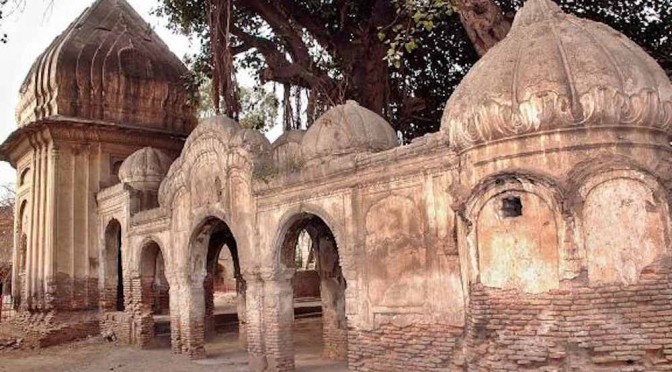Centre of the World
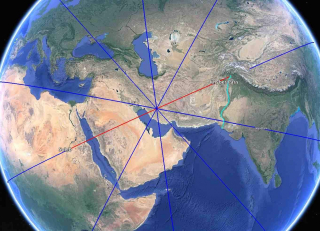
The immediately obvious feature of this line is that it runs from the Upper Nile to the high Himalayas. Again it reinforces the concept that Persepolis is the centre of what were the extremities of the Persian world.
The immediately obvious feature of this line is that it runs from the Upper Nile to the high Himalayas. Again it reinforces the concept that Persepolis is the centre of what were the extremities of the Persian world.
Soleb
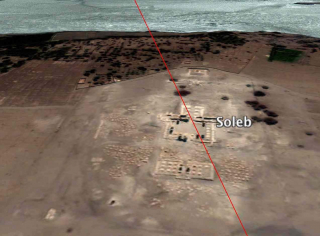 On the upper nile the line crosses the Egytian temple of Soleb, which now lies within Sudan.
On the upper nile the line crosses the Egytian temple of Soleb, which now lies within Sudan.
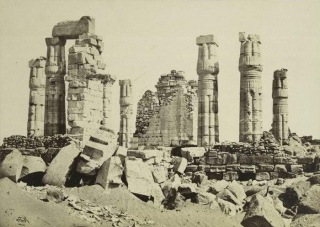 The temple is in historic Nubia. The Temple is atributed to Amenhotep III and was dedicated to Amun Re. It was renewed by Tutankhamun and is famous for the fact that it was guarded by the Prudhoe lions which now reside in the British Museum. once again a recognition of another sacred site.
The temple is in historic Nubia. The Temple is atributed to Amenhotep III and was dedicated to Amun Re. It was renewed by Tutankhamun and is famous for the fact that it was guarded by the Prudhoe lions which now reside in the British Museum. once again a recognition of another sacred site.
Peshawar
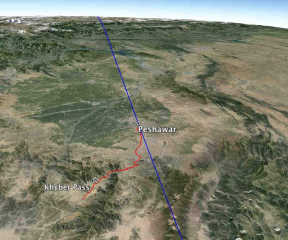 Peshawar is, on the other hand, located in a valley high in the Himalayas. Initially I though the significance of this line was that it marked the eastern end of the Khyber Pass. The pass is the ancient way to obtain access to the Indian continent without the need to cross the Indus, which often could be a hazardous occupation. Thus once again the pass could be seen as another gateway to Persia.
Peshawar is, on the other hand, located in a valley high in the Himalayas. Initially I though the significance of this line was that it marked the eastern end of the Khyber Pass. The pass is the ancient way to obtain access to the Indian continent without the need to cross the Indus, which often could be a hazardous occupation. Thus once again the pass could be seen as another gateway to Persia.
 Initially I ignored Peshawar, dismissing it as a frontier town for the British Raj, which in my youth was often dramatised in films such as ” King of the Kyber Rifles”
Initially I ignored Peshawar, dismissing it as a frontier town for the British Raj, which in my youth was often dramatised in films such as ” King of the Kyber Rifles”
Ghor Khatri
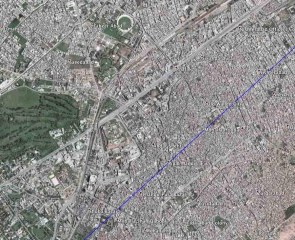 When I followed the line however having recognised the existence of the golf course and the cricket ground, I noticed a most unusual place name in Google Earth “Old Walled city” The line did not pass through this area of Peshawar but it attacted my attention to a complex of buildings just to the south of it.
When I followed the line however having recognised the existence of the golf course and the cricket ground, I noticed a most unusual place name in Google Earth “Old Walled city” The line did not pass through this area of Peshawar but it attacted my attention to a complex of buildings just to the south of it.
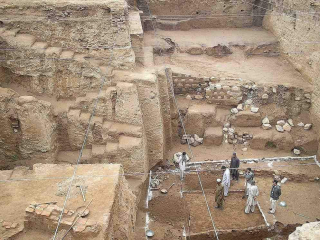 I discovered this was the site of one of a famous acheological dig which has uncovered level after level of historic development on this site.
I discovered this was the site of one of a famous acheological dig which has uncovered level after level of historic development on this site.
Aging studies on the site show that relics dates back to approximately the same time as the lifetime of Siddartha Gautama ( Buddah).
Buddah found enlightenment whilst sitting under the Bodhi tree.
Buddism flourished during the reign of the Kushan Emporer Kanishka. The centre of the Buddist religion became Peshawar and it was from here that Buddism was spread to China and the far east.
Pipal Mandi
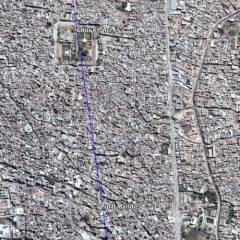 There were two special places for Buddists in Peshawar.
There were two special places for Buddists in Peshawar.
Firstly the great stupa which housed Buddah’s bowl and perhaps Buddah’s relics. There are several eye witness accounts which have survived in Buddist literature which estimate its height to be around 400 feet. For reference that is bigger than St Pauls Cathederal and by far the largest building of the ancient world.
Proffessor Ahad Dani puts the site of the great stupa local to Ghor Khatri, though there are other opinions on the exact location.
Secondly a cutting from the Bodhi tree was planted in Peshawar. This time there is no doubt about the location the tree was at Pipal Mandi.The tree itself was a place of Buddist pilgrimage. It grew to a great height and three seventy foot Buddah’s sat underneath it’s branches.
As can bee seen, the line from Persepolis runs through both Pipal Mandi and Ghor Khatri. Taking all the other alignments into account I think it is probable that Professor Dani is right – the site of the great stupa would be at Ghor Khatri!
